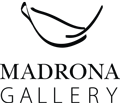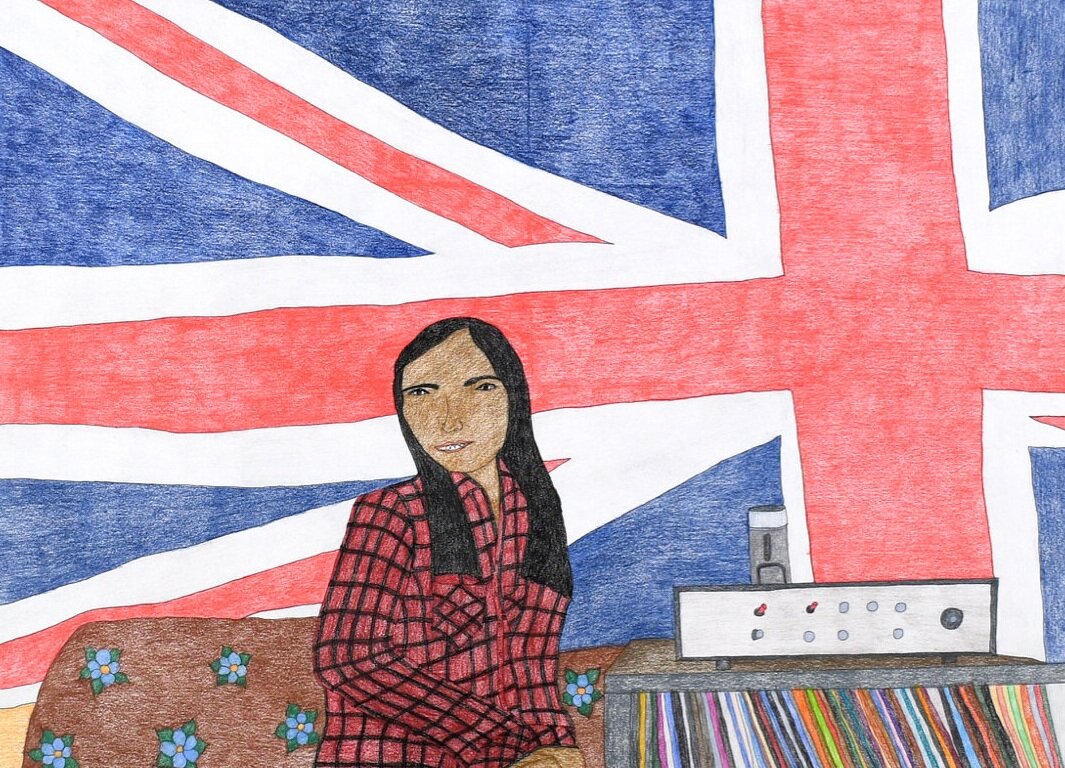Kudluajuk Ashoona
/November 2 - 15, 2019
Opening Reception November 2, 1-4 p.m.
Madrona Gallery is pleased to present the first ever major solo exhibition of works from Kudluajuk Ashoona.
Kudluajuk Ashoona’s drawings invite the viewer into a rarely
seen world of private, interior life in Kinngait. Her drawings of
gatherings, live music, parties and family give us access to a new
perspective in contemporary Inuit art. They incorporate many
aspects of popular culture, along with specifics of life in the North.
This unique combination creates intrigue and depicts many
aspects of life experienced by the artist in a way never seen in
this medium before. This subject builds on Annie Pootoogook’s
breakthrough drawings of contemporary interior scenes but
provides a different perspective of life in Kinngait.
An important feature of Kudluajuk’s drawings are her unique
handling of space. Often perspective will be flattened or skewed to
create a complex sense of space around the primary subject. This
will often highlight patterns or repetition of certain shapes and
colours. This in combination with the figures in her drawings make
her work a valuable addition to a thriving contemporary drawings
community in Kinngait.
Between Happenstance and High Jinks, the drawings of Kudluajuk Ashoona
Madrona Gallery
November 2019
Kegan McFadden
Famed Inuit photographer Peter Pitseolak (1902-1973), known for his copious amount of carefully constructed images about traditional life in the North which detailed clothing, dances, and domestic scenes, got his first camera in the 1940s. With regional interests in producing film and video on par with similar resources and community access television available throughout Canada during the late 20th century, the moving image quickly surpassed the Inuit attention to photography, ultimately leading to international focus placed on filmmakers such as Zacharias Kunuk and most recently the collective, Isuma, who represented Canada at the Venice Biennial this year. There has not been another Inuit artist better known for the still film image since Pitseolak, but with social media ensuring the ubiquity of image circulation, in Cape Dorset Kudluajuk Ashoona is making drawings based on pictures that are of indeterminate era … sometime after Pitseolak’s death but before Instagram.
There is a curious pride in these drawings, which comprise the artist’s first solo exhibition. It’s the sort of full-hearted satisfaction of a grandmother taking stock of her family and her community. Domestic interiors proliferate —not a huge surprise— but the landscape creeps into these images in surprising ways. We see a horizon line broken by her grandson’s head, which might just also be the place where the curtain meets the back of the couch behind him; a black void envelopes a small child in her red bonnet, peaking out from their mother’s amauti, it’s coal-coloured vastness can be interpreted as a dark room and just as easily as the endless night sky. This application is revisited in another drawing, where a adult is holding up a child, both sharing a blank but bemused expression. The blue of a bed sheet in one drawing is the exact same pencil used to indicate sky in another.
Ashoona’s muted colours, in bold compositions, offer something similar to nostalgia … but not for a time akin to what Pitseolak wanted to capture with his photographs. Instead, a silliness emanates. Humour ought to be studied as a particularly important aspect of life in the North, because these drawings show a hilarity that is so common to stir memories further afield and yet are strange enough to most viewers, resulting in a satisfying disorientation:
That blue housecoat with the red flowers that might as well be a kimono leading a pana to act as a stand-in for a samurai sword and for no reason beyond the beauty of folly during the boring months, why not don a skeleton mask and freight wig to pose in a nondescript hallway with red carpeting and the curious number ’16’ on what we presume to be a door frame?
The sullen face of a preteen is made up in a gothic face paint reminiscent of the dark sided glam rock look of KISS. The bright flower-patterned curtain behind him blends into a clearly delineated yet still unidentifiable architecture of screens and windows and mirrors, echoing the artificial hollowed eyes on the young figure’s face.
A loose inventory of what is depicted in Kudluajuk Ashoona’s drawings could read as: heavy eyeshadow, too many hair clips for such short hair, teenagers giving the middle finger; a dead-ringer for Michael Jackson; balaclavas, the clown costume I wore the Halloween I was three; a spill of beads; a spill of rocks, or pebbles; a construction site; the band Sugluk during their formative years; swirls, fowl; costumes and more costumes; the interior of the Co-op… she is showing us her life, the mundane, the fantastical and a few studies in between. Everything bleeds together — inside and outside, improprieties and candid pride.
This counter-intuitive approach to make drawings based on photographs (as opposed to prints of an original artwork as has been the predominant ethos in Northern art cooperatives), forces a reconsideration of these economies, which reinforces market trends of late. Drawings once understood as early drafts from which to pull imagery for stonecuts or other editioned prints now stands on its own as legitimate and one of a kind artworks.
The important thing to keep in mid when looking at any of these marvellous drawings is that Ashoona is clearly a mistress at messing with of orientation, who employs cropping that implies at once a flawed photographic technique but also the artist’s eye. This is because it is not a perfect image, it is a great drawing!
- Kegan McFadden



















